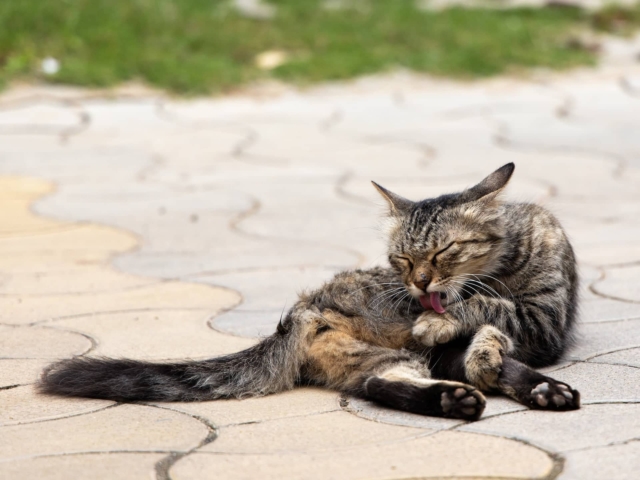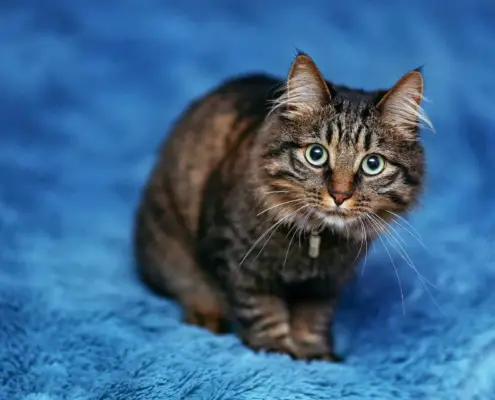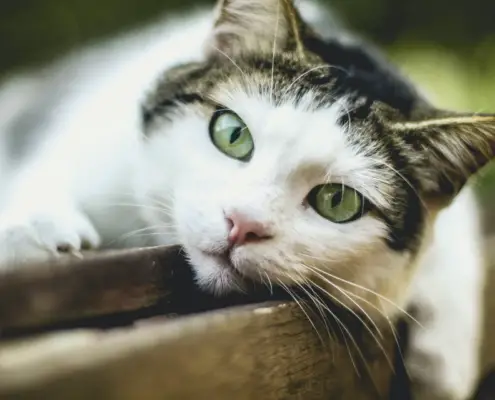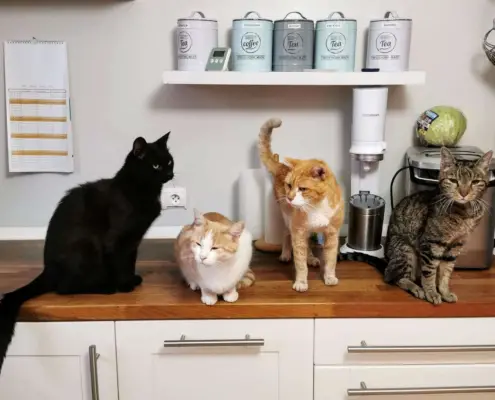
Cats are known for their fastidious grooming habits. Whether you’re a proud cat owner or simply an admirer of these fascinating creatures, you’ve probably wondered why cats spend so much time licking themselves. This article delves into the science behind feline grooming and explores the various reasons why cats engage in this behavior.
The Instinctual Reasons Behind Cat Grooming
Grooming is an instinctual behavior in cats that dates back to their wild ancestors. Kittens learn to groom themselves by observing their mothers, who lick them to keep them clean and stimulate blood flow. As cats grow older, grooming becomes a way for them to maintain their hygiene, temperature regulation, emotional well-being, and social bonds.
Maintaining Cleanliness: How Grooming Helps Cats Stay Healthy
One of the primary reasons why cats groom themselves is to maintain cleanliness. When cats lick their fur, their tongues act like natural combs, removing dirt, debris, and loose hair. This self-cleaning process helps prevent the accumulation of parasites, bacteria, and fungi, which could lead to skin infections or other health issues. Additionally, grooming allows cats to distribute natural oils produced by their skin, which helps keep their fur soft and shiny.
Regular grooming also helps cats prevent hairballs. While grooming, cats inadvertently swallow loose hair, which can accumulate in their digestive system. Through grooming, cats remove excess hair and reduce the likelihood of hairballs forming, which can cause discomfort and digestive issues.
Temperature Regulation: How Cats Use Grooming to Stay Cool
Cats are known for their ability to regulate body temperature, and grooming plays a vital role in this process. When cats groom themselves, their saliva evaporates from their fur, creating a cooling effect. This behavior is particularly important in hot weather or when cats are exposed to high temperatures. By licking their fur, cats can cool down their bodies and maintain a comfortable body temperature.
In addition to cooling, grooming also helps cats stay warm during colder months. When cats lick their fur, the process stimulates the release of natural oils, which act as insulation and help trap heat close to their bodies. This natural layer of insulation helps cats stay warm and comfortable in chilly environments.
Emotional Well-being: The Role of Grooming in a Cat’s Mental Health
Grooming is not only essential for a cat’s physical well-being but also plays a crucial role in their emotional well-being. Cats are naturally solitary animals, and grooming provides them with a sense of comfort and relaxation. The repetitive and rhythmic nature of grooming helps cats release stress and anxiety, promoting a sense of calmness and tranquility.
Furthermore, grooming stimulates the release of endorphins in cats, which are often referred to as “feel-good” hormones. These endorphins help cats feel content and happy, contributing to their overall emotional well-being. In multi-cat households, grooming can also serve as a bonding activity between cats, strengthening their social connections.
Social Bonding: How Grooming Strengthens Relationships Between Cats
In the feline world, grooming is not only a self-care routine but also a social behavior. Cats engage in mutual grooming, also known as allogrooming, to strengthen their social bonds with other cats. Allogrooming involves one cat grooming another, often targeting hard-to-reach areas such as the head, neck, and back.
Through allogrooming, cats establish trust and strengthen their social hierarchy. It is a way for cats to show affection, establish dominance, and maintain harmonious relationships within their social groups. Additionally, grooming can help resolve conflicts between cats by diffusing tensions and promoting a sense of togetherness.
The Anatomy of Cat Grooming: Understanding the Mechanics Behind Licking
To truly understand why cats lick themselves, it is essential to examine the anatomy behind this behavior. When a cat licks its fur, the tongue’s surface is covered with tiny, backward-facing barbs called papillae. These papillae act like a natural brush, allowing cats to groom their fur effectively.
The barbs on a cat’s tongue not only help remove debris and tangles from their fur but also serve as a tool for distributing natural oils. As cats lick themselves, they spread these oils across their fur, keeping it moisturized and free from dryness. The unique structure of a cat’s tongue makes grooming an efficient and thorough process.
The Dangers of Excessive Grooming: When Licking Becomes a Problem
While grooming is a normal behavior, excessive grooming can become a problem. Some cats may engage in over-grooming due to underlying medical or psychological issues. Excessive grooming can lead to hair loss, skin irritations, and even self-inflicted injuries. If you notice your cat obsessively grooming or showing signs of discomfort, it is crucial to consult a veterinarian to rule out any underlying health concerns.
Common Grooming-Related Issues in Cats and How to Address Them
Cats may experience several grooming-related issues that require attention. Hairballs, as mentioned earlier, are a common problem. To minimize hairball formation, regular brushing can help remove loose hair before cats ingest it. Additionally, providing a balanced diet with adequate fiber can aid in digestion and reduce hairball formation.
Another grooming-related issue is the presence of fleas or other parasites. Regular flea prevention treatments, along with thorough grooming, can help keep these pests at bay. If you suspect your cat has fleas or other parasites, consult a veterinarian for appropriate treatment options.
The Fascinating World of Feline Grooming
Cats’ grooming habits are a fascinating aspect of their behavior that serves multiple purposes. From maintaining cleanliness and temperature regulation to promoting emotional well-being and social bonding, grooming plays a crucial role in a cat’s life. Understanding the science behind feline grooming allows us to appreciate this behavior and ensure our feline friends lead happy and healthy lives.
Next time you observe your cat grooming itself, remember the intricate mechanics behind their licking and the various benefits it provides. By being aware of grooming-related issues and providing appropriate care, you can contribute to your cat’s overall well-being and strengthen the bond you share.
If you enjoyed my article, I would appreciate you sharing it with your network.

Sima Ndlebe
Sima writes for CatBuzz. He is interested in Cats, Health and Fitness, and Entrepreneurship.
Published: 20 October 2023




